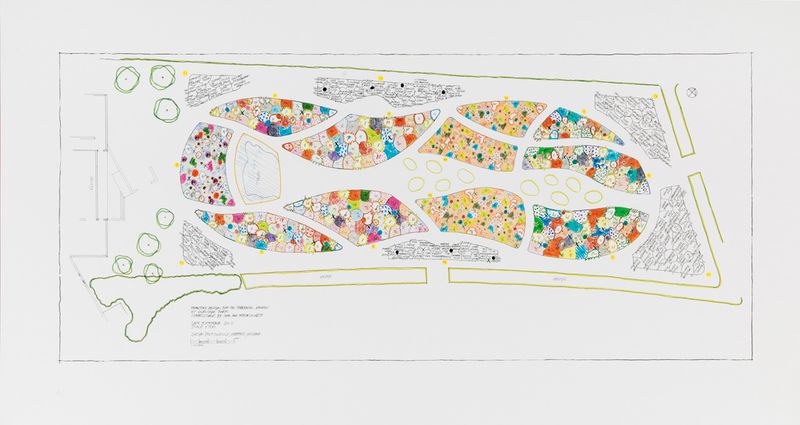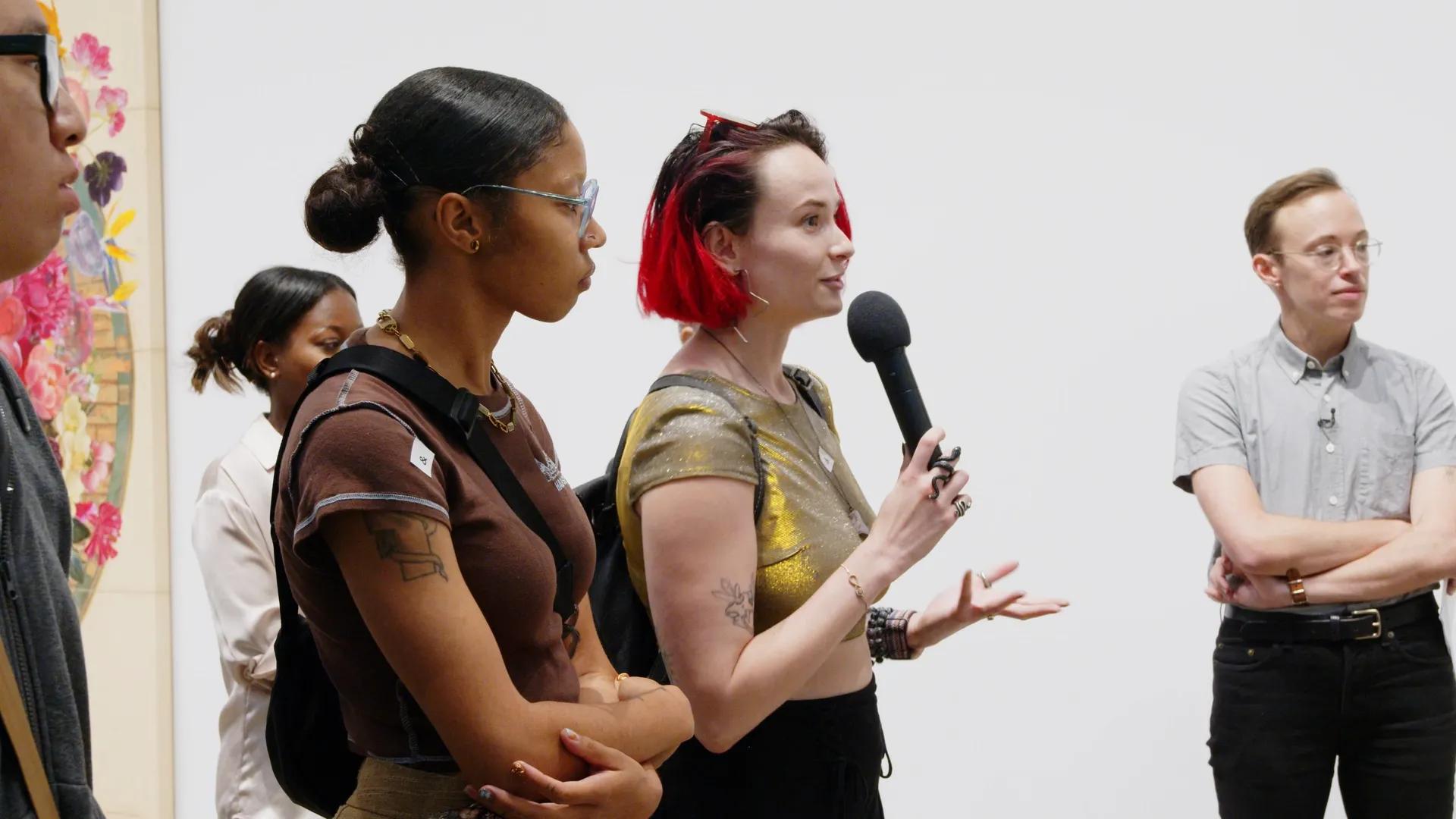
Oudolf Field, Hauser & Wirth Somerset, 2017. Photo: Jason Ingram
Oudolf Field
This resource has been produced for the Oudolf Field at Hauser & Wirth Somerset.
About Piet Oudolf
Piet Oudolf was born in 1944 in Haarlem. He is an internationally-renowned landscape designer from the Netherlands. Oudolf has received many high profile commissions around the world, including working with the Serpentine Gallery in London in 2011.
About the Oudolf Field
Piet Oudolf has designed the landscaping scheme for the entire site, including a large perennial meadow to the north of the farmyard and new gallery buildings. Piet Oudolf’s plan for the garden is to keep it simple: the main farmyard area is to be left as pasture. The south-facing field is another matter. This is to be an Oudolf extravaganza, hemmed in on three sides by the existing hedge, which he plans to buttress with a double row of trees. This sense of enclosure, Oudolf says, makes it “a real garden” as opposed to a landscape design, though there is a dramatic vista to a silhouetted dovecote on the nearest hilltop.
What inspires his work?
Nature, time and art are his main inspirations. Several different planting concepts form the structure to his plan. He says that, ‘For me, garden design isn’t just about plants, it is about emotion, atmosphere, a sense of contemplation. You try to move people with what you do.’
What are his main themes?
Piet Oudolf is a leading figure of the “New Perennial” movement, using bold drifts of herbaceous perennials and grasses which are chosen at least as much for their structure as for their flower colour. He is interested in combining plants naturalistically. Oudolf describes the design as the start and not the end of the process. He also believes it is important to use plants that have an “afterlife” and are good once they are over, which in turn makes the plantings better for ecology and insect life.
How does he design his gardens?
Piet Oudolf creates working drawings on tracing paper; these are layered to show different planting and depths. What is notable about Oudolf’s design is the way he has chosen to clump plants together here as opposed to arraying them in drifts, his usual habit. Oudolf describes it as “a complicated layering of seasonality, energy, endurance and reward – both before, during and after flowering”.
What are his favourite plants?
‘Joe-Pye weed, echinacea, baptisia—not just when they flower but when they come into seed. Even when the birds eat off the seedpod, they are still beautiful. And they change your garden from spring until winter. They are hard workers.’
How does Oudolf’s garden relate to historical gardens?
The ways in which plants are organised into a garden reflects the culture in which they were designed. Up until the 19th century garden design was mainly very complicated and therefore demanding to maintain. However, garden designers such as Capability Brown in the 18th century and Gertrude Jekyll in the 19th century, introduced more informal planting styles. Piet Oudolf’s garden shows influence from these historical designs, however a much more informal style and a concern for ecology is evident.

Landscape proposal for the Oudolf Field at Durslade Farm
Glossary
Meadow
Wildflower meadows are a rich and colourful habitat full of flowers and grasses.
Wildflower
A wildflower is a flower that grows in the wild, meaning it was not intentionally seeded or planted.
Landscape
A landscape is made up of the visible features of an area of land, such as mountains, forests, ponds or lakes. It is always a natural appearance but can also be man-made.
Perennials
Perennial plants are plants that live for more than two years. The term is often used to differentiate a plant from shorter-lived plants such as annuals and biennials
Ecology
Ecology is used to describe the science that deals with the relations and interactions between organisms and their environments.
Biodiversity
Biodiversity is a term used to describe the variety of life on Earth. It includes plants, animals and all the microorganisms that we can not see.
Suggested Activities During Your Visit
Note: you will need to bring pencils and a sketchbook.
Activity 1
How many different colours can you see, list of ways to describe them, for example, not all greens are the same.
Activity 2
How many different flowers or plants can you see? Draw a quick sketch to help you to identify them.
Activity 3
Think about size and scale, stand in a certain position hold your pencil in front of you and use it to help you to measure plants, plot these measurements to make a drawing.
Practical Activity Prompts and Ideas for Discussion Following Your Visit
Key Stage 1 and 2
Make a miniature garden using found objects.
Make tissue paper flowers, use modelling material to stand them up and create your own landscape. Invent your own flower, draw it and give it a name.
Key Stage 3
Many wildflowers have medicinal properties; find out what some of the plants from Piet Oudolf’s garden can be used for.
Key Stage 4 and beyond
Design and plant your own wildflower garden.
Visit other local gardens and compare the planting, e.g. Kilver Court in Shepton Mallet or Hestercombe Garden in Taunton.
Supplementary Research
Resources
1 / 8









